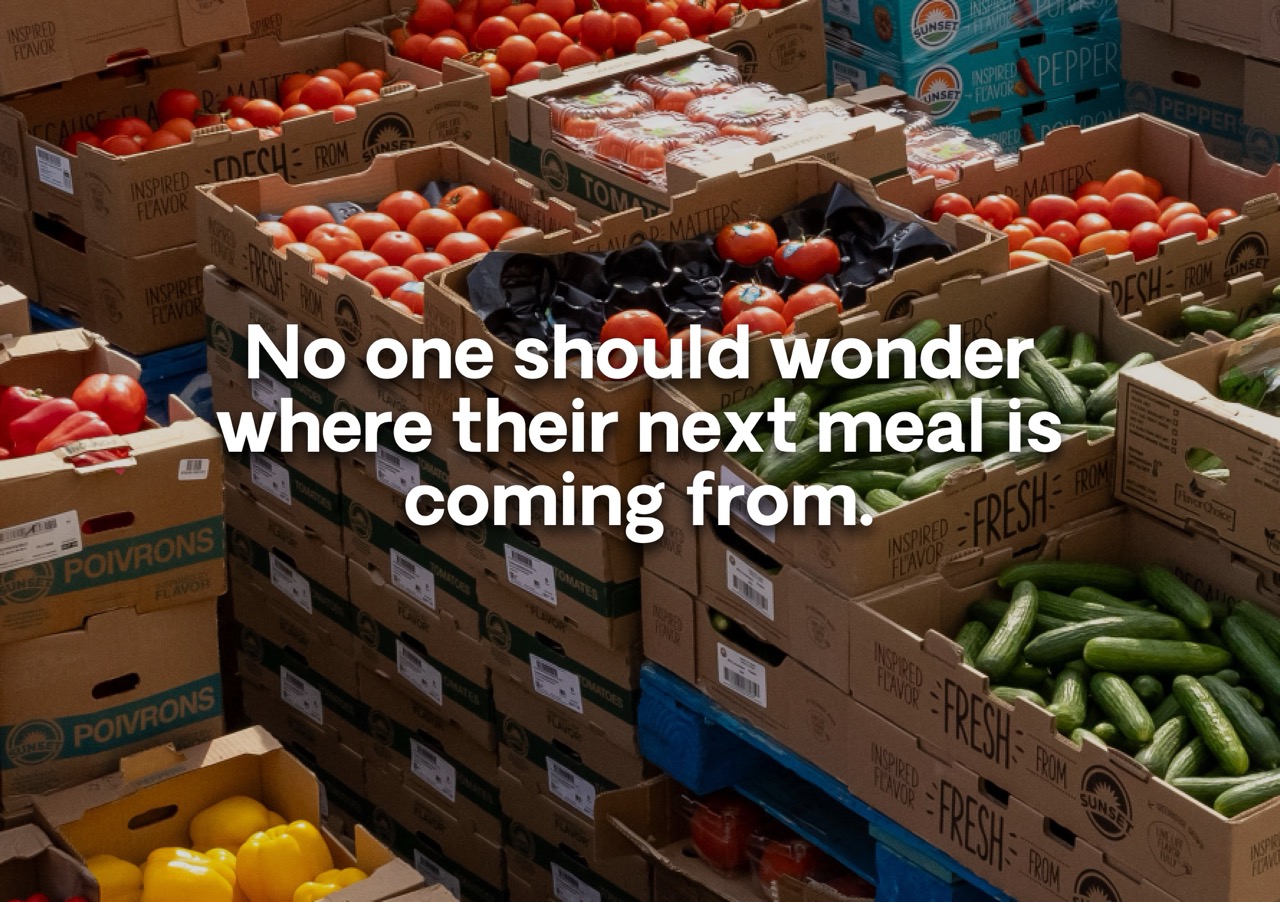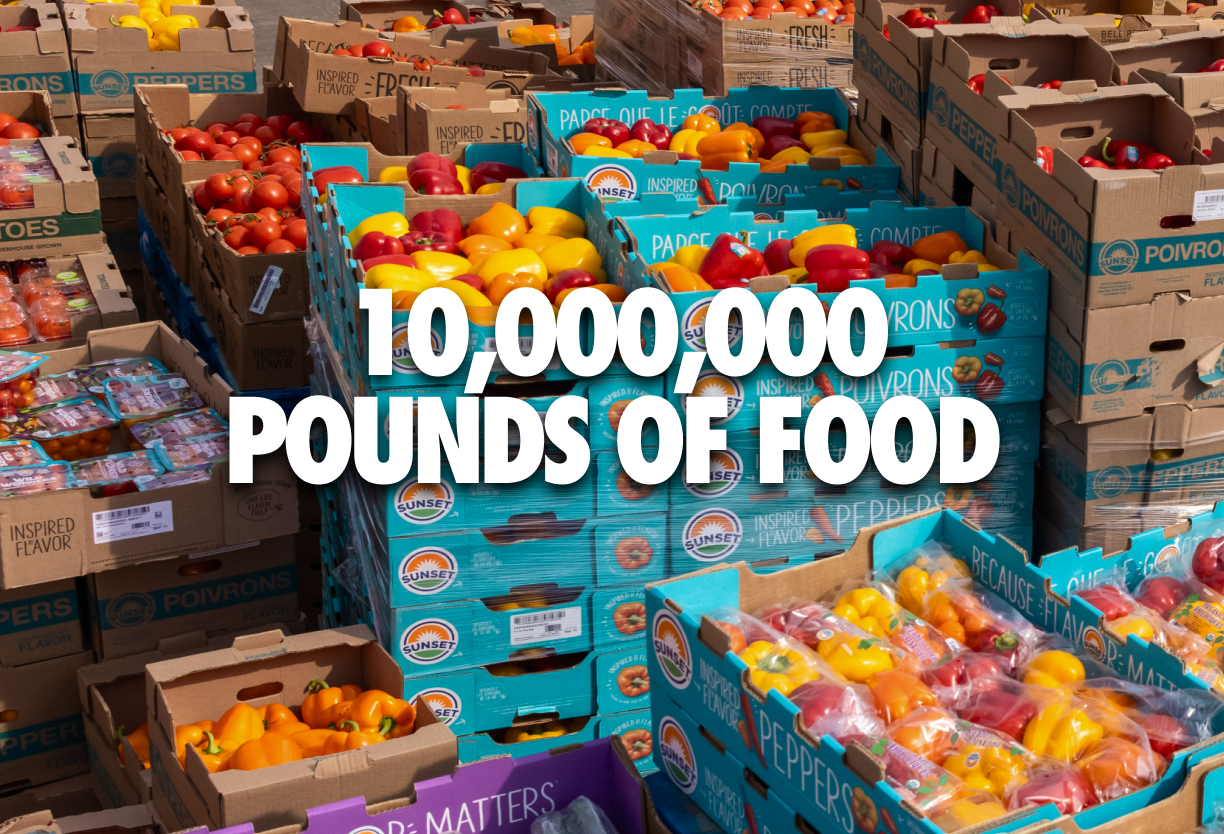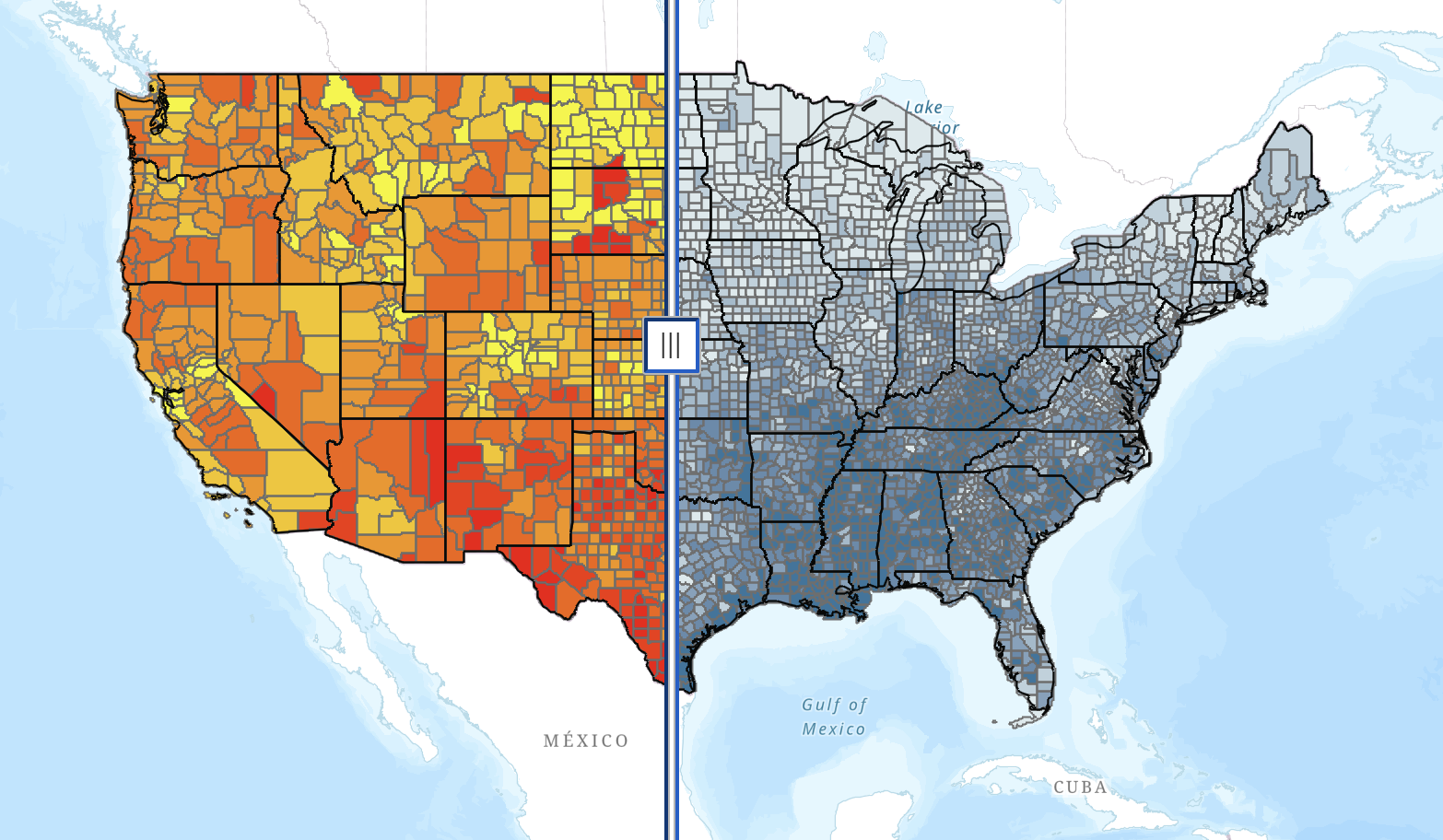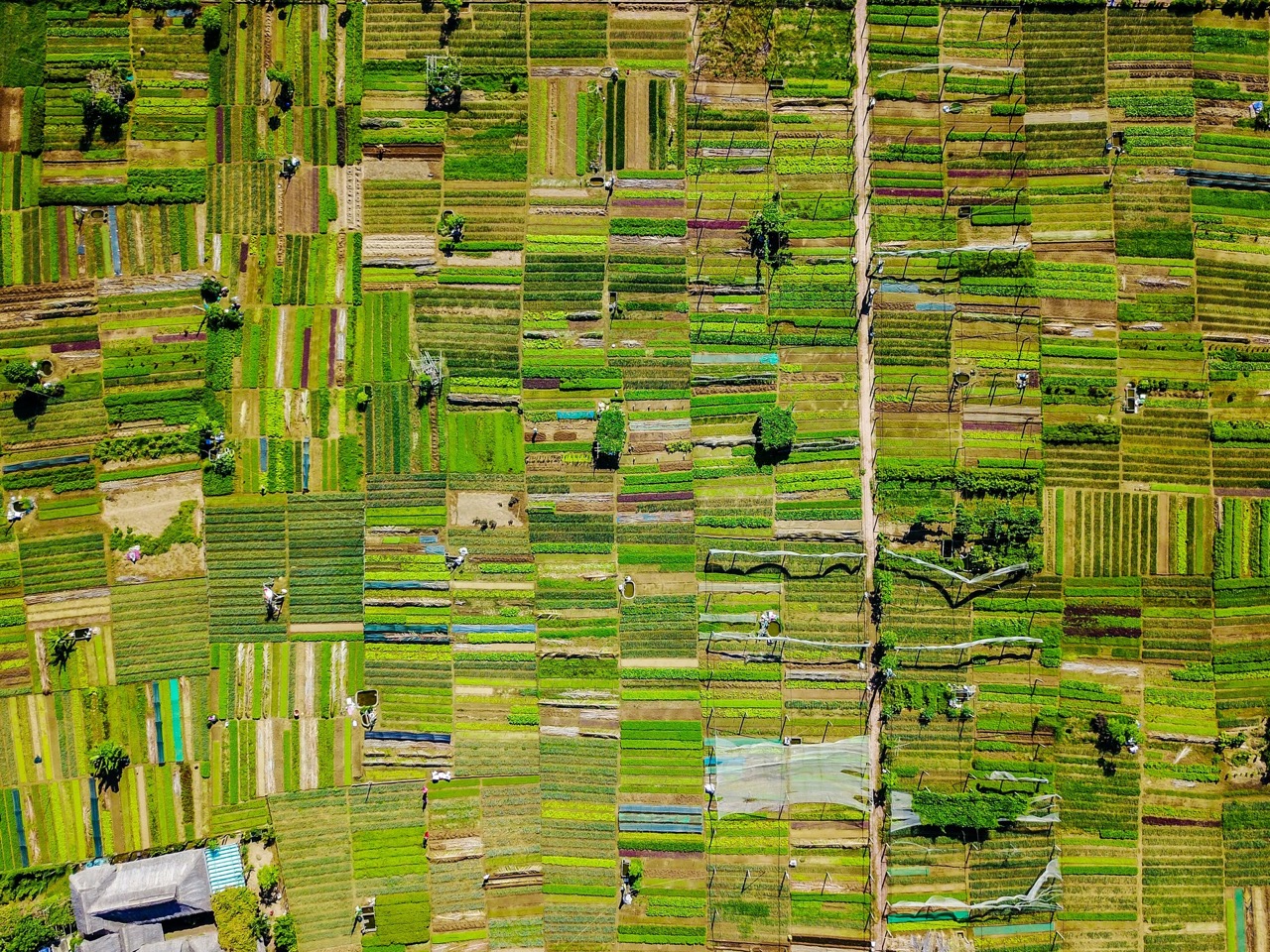.jpg)
In southern Maine, not too far from the New Hampshire border, there lies a 42-acre vegetable farm owned and run by two innovative, professional chefs. Before forming Our Farm Maine in Springvale, Maine in 2013, Aron Gonsalves and Laura Young spent almost a decade in Oahu, Hawaii. During this time, they initially
worked as culinary artists and then transitioned to running a garden supply store focused on hydroponics and aquaponics. Aron and Laura also partnered with the Department of Education to create school gardens. With a background in farming on limited city land, they eventually decided to move to Maine and begin Our Farm Maine. In addition to growing various produce, including cabbage, zucchini, summer squash, winter squash, cucumber, bok choy, broccoli, and corn, the farm also sells humanely raised beef, pork, chicken, and eggs. Our Farm Maine has a collaborative environment with both their customers and other local farmers, focusing on sustainability, relationship building, and providing nutritious produce to others.
When I spoke to Aron, I was struck by his passion for helping people who are food insecure: “What I sell, I sell. The rest I donate. Even if we lose money, what we gain in value is giving to food insecure communities.” Our Farm Maine was impacted by the COVID-19 pandemic as much of their produce typically goes to “restaurants, schools, and other institutions,” all of which closed early on. He characterized the produce they grow for restaurants as “specialty items,” which wouldn’t be as marketable for grocery stores. Yet, they were one step ahead. Aron told me that they “were aware of what was coming” and “focused on standard commodities for food banks.” Our Farm Maine aimed to grow produce that was “more useful for food banks” and “easier to utilize and cook.” Aron emphasized how even though Our Farm Maine’s distribution shifted and their volume of sales decreased, the farm “fed a lot more people because of COVID-19.” More specifically, many of these food recipients were food insecure and “need access to high quality food,” according to Aron.
.jpg)
What is high quality food? Aron described how the nutrients in food diminish as time goes on. Getting access to food that is “2-3 days old” rather than “10-15 days old,” or “the leftovers from grocery stores,” means that it is both “fresh” and “nutrient-dense.” This is how Aron defines “better quality food.” Since July, Aron has donated over 5,000 pounds of fresh produce, including zucchini, squash, cucumbers, to the York County Shelter Programs, the local Salvation Army, and the Sanford Backpack Program, with the help of The Farmlink Project and other backers. The Sanford Backpack Program helps to provide food to youth who do “not have access to food or their families can’t afford it,” according to Aron. Additionally, since August, The Farmlink Project has facilitated the delivery of 12,000 pounds of various produce, including cucumbers, squash, bok choy, and cabbage, from Our Farm Maine to Connecticut Food Bank.
This past Thursday morning, on September 24th, I was able to visit Connecticut Food Bank in Wallingford, Connecticut, to attend a delivery from Our Farm Maine with Will Collier, another Farmlink Project team member. This specific delivery included 3,000 pounds of a mixture of fresh squash and cabbage.
Paul Shipman, the Senior Director of Marketing, Communication, & Government Relations at Connecticut Food Bank, was kind enough to speak with us about the organization. Connecticut Food Bank is a part of Feeding America and distributes food to 500 agencies across Fairfield, Litchfield, Middlesex, New Haven, New London, and Windham counties, according to their website. Paul said that 30% of the food the food bank distributes is fresh produce, and he emphasized how excited Connecticut Food Bank is to get deliveries like this one from Our Farm Maine. He noted how important it is to support small-scale, local farms and how Connecticut Food Bank is committed to doing this work as part of its strategy to reduce food insecurity and food waste.
I was impressed by all of the different ways that this food bank fights hunger in Connecticut. Among other amenities, they have multiple refrigerated trucks, mobile distributions, and a Dairy Express program to remove transportation obstacles from the picture, according to Paul. Additionally, he described how Connecticut Food Bank distributes food at schools and in parking lots, as well as having agencies collect food directly from their hub. This main building location is both impressive in its size and resources. According to Paul:
“We have significant refrigerated and freezer space within the warehouse to stock large amounts of fresh and frozen foods. Our capacity to hold that food allows our network of community-based programs some flexibility in accessing fresh foods they may not have the capacity to store in large quantities. Our salvage and sortation areas allow us to engage volunteers to help us sort, inspect, and repackage food for distribution across our service area.”
.jpg)
As we stood outside this 85,000 square-foot building talking just before 9 am on that sunny fall morning, I noticed many cars, trucks, and vans coming in and out of the parking lot. The majority were community-based agencies, such as soup kitchens and food pantries, coming to load their vehicles with food for distribution to people in need. There were also many food bank volunteers and employees moving about. Everyone was working hard together to reduce food insecurity in Connecticut—an inspiring sight to see. The Farmlink Project is thankful for all that Aron, Laura, the rest of Our Farm Maine, Paul, and all the volunteers and employees at Connecticut Food Bank are doing to help feed those in need in New England.
You can learn more about Our Farm Maine here.
< Back
.jpg)
In southern Maine, not too far from the New Hampshire border, there lies a 42-acre vegetable farm owned and run by two innovative, professional chefs. Before forming Our Farm Maine in Springvale, Maine in 2013, Aron Gonsalves and Laura Young spent almost a decade in Oahu, Hawaii. During this time, they initially
worked as culinary artists and then transitioned to running a garden supply store focused on hydroponics and aquaponics. Aron and Laura also partnered with the Department of Education to create school gardens. With a background in farming on limited city land, they eventually decided to move to Maine and begin Our Farm Maine. In addition to growing various produce, including cabbage, zucchini, summer squash, winter squash, cucumber, bok choy, broccoli, and corn, the farm also sells humanely raised beef, pork, chicken, and eggs. Our Farm Maine has a collaborative environment with both their customers and other local farmers, focusing on sustainability, relationship building, and providing nutritious produce to others.
When I spoke to Aron, I was struck by his passion for helping people who are food insecure: “What I sell, I sell. The rest I donate. Even if we lose money, what we gain in value is giving to food insecure communities.” Our Farm Maine was impacted by the COVID-19 pandemic as much of their produce typically goes to “restaurants, schools, and other institutions,” all of which closed early on. He characterized the produce they grow for restaurants as “specialty items,” which wouldn’t be as marketable for grocery stores. Yet, they were one step ahead. Aron told me that they “were aware of what was coming” and “focused on standard commodities for food banks.” Our Farm Maine aimed to grow produce that was “more useful for food banks” and “easier to utilize and cook.” Aron emphasized how even though Our Farm Maine’s distribution shifted and their volume of sales decreased, the farm “fed a lot more people because of COVID-19.” More specifically, many of these food recipients were food insecure and “need access to high quality food,” according to Aron.
.jpg)
What is high quality food? Aron described how the nutrients in food diminish as time goes on. Getting access to food that is “2-3 days old” rather than “10-15 days old,” or “the leftovers from grocery stores,” means that it is both “fresh” and “nutrient-dense.” This is how Aron defines “better quality food.” Since July, Aron has donated over 5,000 pounds of fresh produce, including zucchini, squash, cucumbers, to the York County Shelter Programs, the local Salvation Army, and the Sanford Backpack Program, with the help of The Farmlink Project and other backers. The Sanford Backpack Program helps to provide food to youth who do “not have access to food or their families can’t afford it,” according to Aron. Additionally, since August, The Farmlink Project has facilitated the delivery of 12,000 pounds of various produce, including cucumbers, squash, bok choy, and cabbage, from Our Farm Maine to Connecticut Food Bank.
This past Thursday morning, on September 24th, I was able to visit Connecticut Food Bank in Wallingford, Connecticut, to attend a delivery from Our Farm Maine with Will Collier, another Farmlink Project team member. This specific delivery included 3,000 pounds of a mixture of fresh squash and cabbage.
Paul Shipman, the Senior Director of Marketing, Communication, & Government Relations at Connecticut Food Bank, was kind enough to speak with us about the organization. Connecticut Food Bank is a part of Feeding America and distributes food to 500 agencies across Fairfield, Litchfield, Middlesex, New Haven, New London, and Windham counties, according to their website. Paul said that 30% of the food the food bank distributes is fresh produce, and he emphasized how excited Connecticut Food Bank is to get deliveries like this one from Our Farm Maine. He noted how important it is to support small-scale, local farms and how Connecticut Food Bank is committed to doing this work as part of its strategy to reduce food insecurity and food waste.
I was impressed by all of the different ways that this food bank fights hunger in Connecticut. Among other amenities, they have multiple refrigerated trucks, mobile distributions, and a Dairy Express program to remove transportation obstacles from the picture, according to Paul. Additionally, he described how Connecticut Food Bank distributes food at schools and in parking lots, as well as having agencies collect food directly from their hub. This main building location is both impressive in its size and resources. According to Paul:
“We have significant refrigerated and freezer space within the warehouse to stock large amounts of fresh and frozen foods. Our capacity to hold that food allows our network of community-based programs some flexibility in accessing fresh foods they may not have the capacity to store in large quantities. Our salvage and sortation areas allow us to engage volunteers to help us sort, inspect, and repackage food for distribution across our service area.”
.jpg)
As we stood outside this 85,000 square-foot building talking just before 9 am on that sunny fall morning, I noticed many cars, trucks, and vans coming in and out of the parking lot. The majority were community-based agencies, such as soup kitchens and food pantries, coming to load their vehicles with food for distribution to people in need. There were also many food bank volunteers and employees moving about. Everyone was working hard together to reduce food insecurity in Connecticut—an inspiring sight to see. The Farmlink Project is thankful for all that Aron, Laura, the rest of Our Farm Maine, Paul, and all the volunteers and employees at Connecticut Food Bank are doing to help feed those in need in New England.
You can learn more about Our Farm Maine here.
Our Farm Maine and Connecticut Food Bank
Springvale, ME, to Wallingford, CT
.jpg)
In southern Maine, not too far from the New Hampshire border, there lies a 42-acre vegetable farm owned and run by two innovative, professional chefs. Before forming Our Farm Maine in Springvale, Maine in 2013, Aron Gonsalves and Laura Young spent almost a decade in Oahu, Hawaii. During this time, they initially
worked as culinary artists and then transitioned to running a garden supply store focused on hydroponics and aquaponics. Aron and Laura also partnered with the Department of Education to create school gardens. With a background in farming on limited city land, they eventually decided to move to Maine and begin Our Farm Maine. In addition to growing various produce, including cabbage, zucchini, summer squash, winter squash, cucumber, bok choy, broccoli, and corn, the farm also sells humanely raised beef, pork, chicken, and eggs. Our Farm Maine has a collaborative environment with both their customers and other local farmers, focusing on sustainability, relationship building, and providing nutritious produce to others.
When I spoke to Aron, I was struck by his passion for helping people who are food insecure: “What I sell, I sell. The rest I donate. Even if we lose money, what we gain in value is giving to food insecure communities.” Our Farm Maine was impacted by the COVID-19 pandemic as much of their produce typically goes to “restaurants, schools, and other institutions,” all of which closed early on. He characterized the produce they grow for restaurants as “specialty items,” which wouldn’t be as marketable for grocery stores. Yet, they were one step ahead. Aron told me that they “were aware of what was coming” and “focused on standard commodities for food banks.” Our Farm Maine aimed to grow produce that was “more useful for food banks” and “easier to utilize and cook.” Aron emphasized how even though Our Farm Maine’s distribution shifted and their volume of sales decreased, the farm “fed a lot more people because of COVID-19.” More specifically, many of these food recipients were food insecure and “need access to high quality food,” according to Aron.
.jpg)
What is high quality food? Aron described how the nutrients in food diminish as time goes on. Getting access to food that is “2-3 days old” rather than “10-15 days old,” or “the leftovers from grocery stores,” means that it is both “fresh” and “nutrient-dense.” This is how Aron defines “better quality food.” Since July, Aron has donated over 5,000 pounds of fresh produce, including zucchini, squash, cucumbers, to the York County Shelter Programs, the local Salvation Army, and the Sanford Backpack Program, with the help of The Farmlink Project and other backers. The Sanford Backpack Program helps to provide food to youth who do “not have access to food or their families can’t afford it,” according to Aron. Additionally, since August, The Farmlink Project has facilitated the delivery of 12,000 pounds of various produce, including cucumbers, squash, bok choy, and cabbage, from Our Farm Maine to Connecticut Food Bank.
This past Thursday morning, on September 24th, I was able to visit Connecticut Food Bank in Wallingford, Connecticut, to attend a delivery from Our Farm Maine with Will Collier, another Farmlink Project team member. This specific delivery included 3,000 pounds of a mixture of fresh squash and cabbage.
Paul Shipman, the Senior Director of Marketing, Communication, & Government Relations at Connecticut Food Bank, was kind enough to speak with us about the organization. Connecticut Food Bank is a part of Feeding America and distributes food to 500 agencies across Fairfield, Litchfield, Middlesex, New Haven, New London, and Windham counties, according to their website. Paul said that 30% of the food the food bank distributes is fresh produce, and he emphasized how excited Connecticut Food Bank is to get deliveries like this one from Our Farm Maine. He noted how important it is to support small-scale, local farms and how Connecticut Food Bank is committed to doing this work as part of its strategy to reduce food insecurity and food waste.
I was impressed by all of the different ways that this food bank fights hunger in Connecticut. Among other amenities, they have multiple refrigerated trucks, mobile distributions, and a Dairy Express program to remove transportation obstacles from the picture, according to Paul. Additionally, he described how Connecticut Food Bank distributes food at schools and in parking lots, as well as having agencies collect food directly from their hub. This main building location is both impressive in its size and resources. According to Paul:
“We have significant refrigerated and freezer space within the warehouse to stock large amounts of fresh and frozen foods. Our capacity to hold that food allows our network of community-based programs some flexibility in accessing fresh foods they may not have the capacity to store in large quantities. Our salvage and sortation areas allow us to engage volunteers to help us sort, inspect, and repackage food for distribution across our service area.”
.jpg)
As we stood outside this 85,000 square-foot building talking just before 9 am on that sunny fall morning, I noticed many cars, trucks, and vans coming in and out of the parking lot. The majority were community-based agencies, such as soup kitchens and food pantries, coming to load their vehicles with food for distribution to people in need. There were also many food bank volunteers and employees moving about. Everyone was working hard together to reduce food insecurity in Connecticut—an inspiring sight to see. The Farmlink Project is thankful for all that Aron, Laura, the rest of Our Farm Maine, Paul, and all the volunteers and employees at Connecticut Food Bank are doing to help feed those in need in New England.
You can learn more about Our Farm Maine here.
.png)
.png)







.svg)
.svg)
.svg)